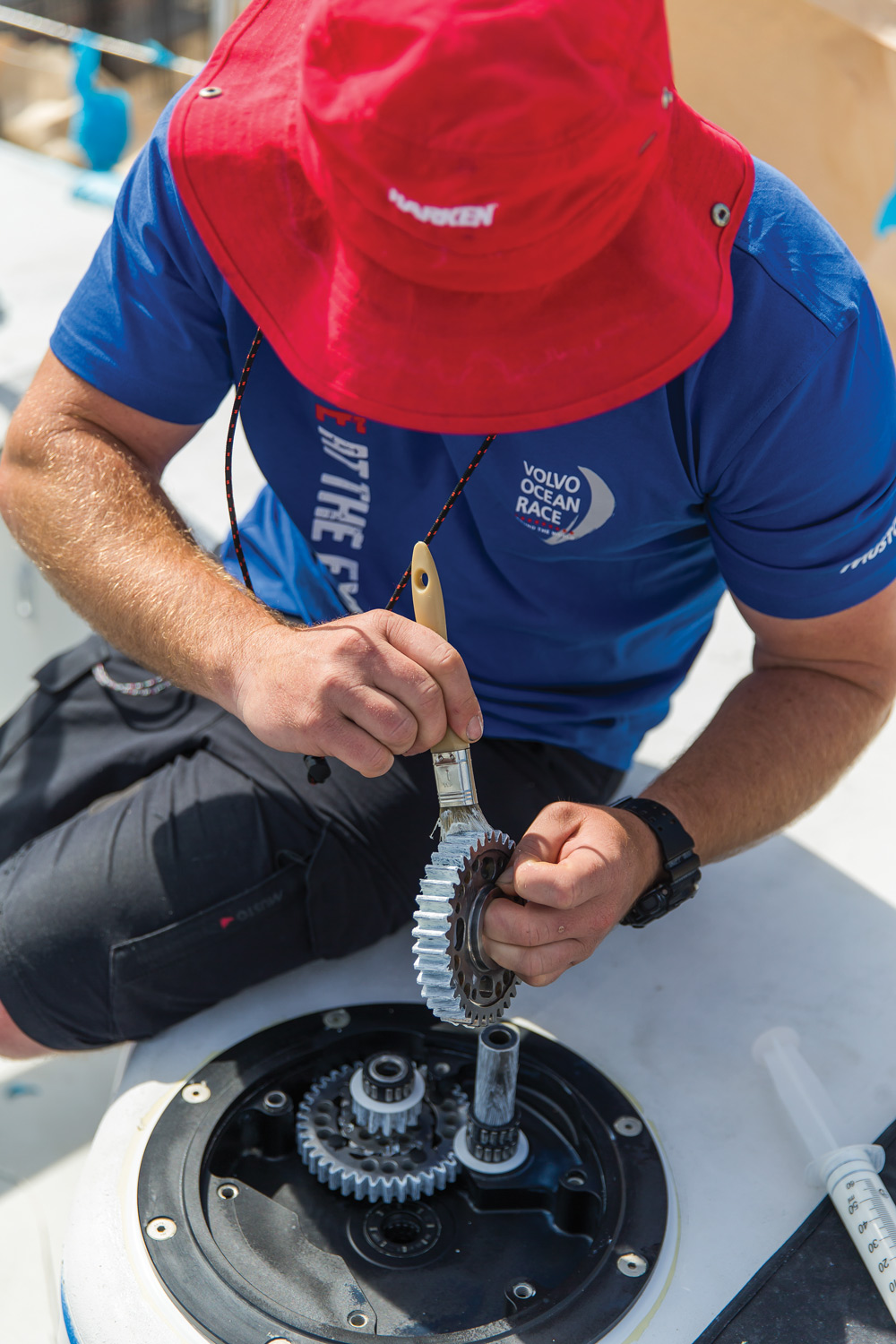Illustrated guide to fitting out
Clean Hardware

Boat hardware is a big expense but it can last for decades if it is properly maintained. If it’s not properly maintained, watch it seize up and corrode and open your wallet to replace it.
All hardware should be routinely flushed with fresh water if sailing in salt water, but it should be particularly well flushed before an off-season lay-up. Winches, which are the most costly of boat hardware, also need periodic maintenance. Give them a spin: They should be free-moving and not make any unusual sounds.
If it’s time to clean them or inspect them—and if you haven’t done it for a few years, it’s time—start by downloading instructions from the winch manufacturer’s website. It’s not a difficult process, but it’s important to put them back together the way they came apart. Taking photographs as you go through the process can also be helpful.
Even if they are in good working order, you may want to consider replacing the springs and pawls, which are inexpensive parts that can wreak havoc if they break. You also want to check for worn gear teeth. Everything should be cleaned, regreased and re-oiled as you put the winch back together.
When it is closed up, give the winch a spin to make sure it’s moving smoothly, and if it’s not retrace your steps to figure out where you went wrong in putting it back together.
Other hardware, including travelers and blocks can be cleaned with soapy water and a toothbrush and inspected for cracks. Hardware manufacturer Harken recommends using a drop of McLube One Drop Ball Bearing Oil to keep ball bearings lubricated.
Although an inspection of a boat’s safety equipment can be done at any time, it’s not a bad idea to check it off the spring fitting out list so you know everything is in order for the sailing season.

Comments